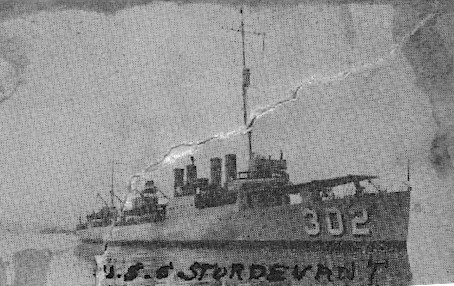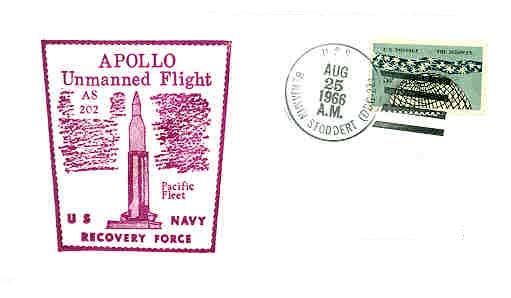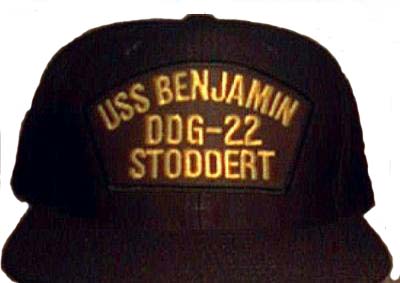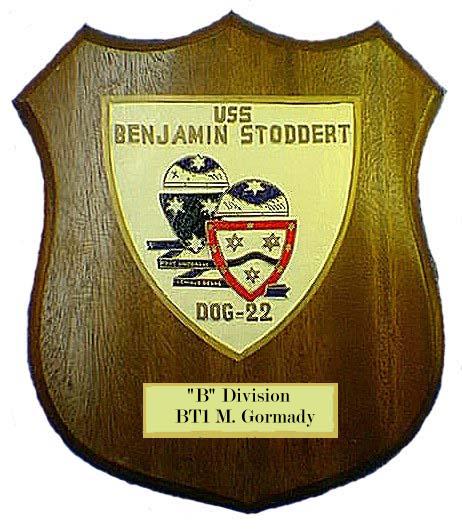1st Stoddert DD-302

History of the First Stoddert
provided by
the Malone family
First Stoddert
(Destroyer No. 302: dp. 1,215
(n.); l. 314'4"; b. 30'11 1/2" (wl.), dr. 9'4"
(mean); s. 33.75 k. (tl.); cpl.
122; a. 4 4", 1 3", 12 21" tt.; cl. Clemson)
Stoddert (Destroyer No. 302) was
laid down on Independence Day 1918 at San
Francisco, Calif., by the Bethlehem
Shipbuilding Corp.; launched on 8
January 1919; sponsored by Mrs.
Gavin McNab; and commissioned on 30 June
1920, Lt. Comdr. Norman Scott
in command.
Stoddert joined Division 33 of
the Reserve Destroyer Squadron, Pacific
Fleet, and completed fitting
out at Mare Island Navy Yard. Between 14 August
1920 and 7 January 1921, she
operated along the coast of California,
participating in tactical exercises
with Battleship Squadron 5 and the
cruiser Birmingham (CL-2). She
also engaged in antiaircraft practice, target
towing, and gun drills off Coronado
Island with her own division. On 7
January 1921, she departed San
Diego with the Pacific Fleet to join the
Atlantic Fleet in the Panama
Canal Zone for winter maneuvers farther south.
From 22 January to 15 February,
the combined fleets held strategic,
tactical, and gunnery exercises
on a cruise to Valparaiso, Chile, and back
to Panama. Following the inter-fleet
championships conducted at Balboa,
Stoddert headed north and, on
5 March, reached San Diego, where she resumed
normal operations with Division
33.
In July, she steamed farther north
to the state of Washington where she
exercised with Kennedy (DD-306).
After maneuvers off the coasts of Oregon
and California, she entered Puget
Sound Navy Yard on 15 December; completed
overhaul on 7 February 1922;
and, four days later, joined Destroyer Division
(DesDiv) 32. She resumed operations
along the west coast. Proceeding to the
south on 8 February 1923 with
the Battle Fleet and Fleet Base Force,
Stoddert took part in maneuvers
en route to the Panama Canal Zone to conduct
fleet problems to test the defense
of the strategic canal. While in Panama
during the month of March, the
fleet engaged in combined tactical and
strategic maneuvers, held experimental
torpedo practice, carried out various
experimental firings against
and finally sank Coast Battleship No. 4, the
former Iowa. Upon the completion
of the combined maneuvers on 30 March,
Stoddert returned to the Bremerton
Navy Yard on 22 April.
The destroyer cruised the Washington
coastline until the end of August,
visiting Astoria, Tacoma, Seattle,
Bellingham, Port Angeles, and Port
Townsend. In July, she escorted
Henderson (AP-1), in which President Warren
G. Harding was embarked. In September,
she steamed south to San Diego Harbor
where the destroyers of her division
formed a circle and scattered flowers
on the water in commemoration
of the men lost in the Point Honda disaster.
From 22 October 1923 until 2 January
1924, Stoddert took part in fleet
maneuvers and torpedo exercises
at San Diego, sailing to the south on 16
January. Transiting the Panama
Canal with the Battle Fleet from 18 to 25
January, she was engaged with
the Scouting Fleet in maneuvers designed to
test the defenses and facilities
of the Canal Zone. During the winter, the
combined fleets were based at
Culebra, and on 22 April 1924 Stoddert arrived
back at San Diego with the Battle
Fleet.
Cruising with Battle Fleet destroyer
squadrons Stoddert operated along the
west coast, principally at San
Diego, San Pedro, Port Angeles, Tacoma,
Seattle, and San Francisco, until
27 April 1925, on which date she arrived
in Hawaii for exercises with
United States Fleet. En route, the fleet
engaged in a joint Army and Navy
problem which simulated an attack on the
Hawaiian Islands by a large overseas
force and was designed to test to the
fullest extent the defenses of
the Hawaiian Islands.
On 1 July 1925, the destroyer
sailed from Pearl Harbor with the Battle Fleet
on a good will cruise via Samoa
to Australia and New Zealand. The ships
visited Melbourne, Dunedin, and
Lyttleton, and the officers and men were
extensively entertained in all
these cities. This visit did much to further
cement the friendly feeling existing
between the United States and Australia
and New Zealand. Stoddert returned
to her base at San Diego on 26 September.
She resumed operations with the
Battle Fleet along the west coast, taking
time to attend the Navy Day celebration
at San Diego from 24 to 27 October
1925 and the Founders Day festivities
held at Astoria, Oreg., between 20 and
23 July 1926. After an overhaul
at the Bremerton Navy Yard, she again sailed
south via San Diego arriving
on 22 March 1927 at Balboa where she and Paul
Hamilton (DD-307) joined the
Battle Fleet. Maneuvering with the fleet at
Guantanamo Bay, Gonaives, and
New York, she went on alone to the Boston Navy
Yard for repairs on her way to
Hampton Roads where she took part in a
presidential review and rejoined
her fleet. Transiting the canal between 11
and 17 June, Stoddert arrived
back in San Diego on 25 June for exercises
with Destroyer Squadron 11. For
the remainder of 1927 and until the end of
April 1928, she operated along
the west coast, principally at San Diego, San
Pedro, Tacoma, Port Townsend,
Bremerton, and Port Angeles.
Her one special assignment took
her to Honolulu for emergency assistance to
the Dole flight, a non-stop airplane
race between San Francisco and
Honolulu, starting on 16 August
1927. Upon receipt of reports of planes
missing, an extensive search
was started under the direction of the
Commander in Chief, Battle Fleet;
Commandant, 12th Naval District; and
Commandant, 14th Naval District.
A total of 54 ships of the Battle Fleet
took part in this search between
17 August and 5 September, covering
approximately 350,000 square
miles.
On 28 April 1928, Stoddert arrived
at Honolulu, via San Francisco, for
Battle Fleet exercises at Lahaina,
Pearl Harbor, and Hilo with Submarine
Divisions 9 and 14. Returning
to San Diego on 23 June 1928, she cruised and
maneuvered between her customary
ports along the Pacific Coast, deviating
from her exercises on 18 and
19 November 1928 to act as part of the honor
escort for President-elect Herbert
Hoover on board battleship Maryland
(BB-46) from San Diego to Los
Angeles.
Under terms of the London Treaty
for Reduction of Naval Armament, Stoddert
was decommissioned on 20 May
1930 and delivered to the Mare Island Navy Yard
for retention by conversion to
a radio-controlled target ship. This was in
accordance with the Navy's decision
to fit out a unit of three destroyers as
radio controlled light targets
for the purpose of conducting Fleet exercises
requiring the use of high speed
targets. Stoddert designated Light Target
No. 1, received the initial installation.
Her experimental radio control
apparatus paved the way for later
fitting out of remote-controlled Boggs
(DD-136) and Lamberton (DD-119),
and pointed the way for the more elaborate
equipment of the famous radio
controlled target ship Utah (AG-16).
She was recommissioned on 6 April
1931, reclassified as miscellaneous
auxiliary, AG-18, on 30 June
1931 and redesignated DD-302 on 16 April 1932.
After experimental operations
she became an element of Mobile Target
Division ;. From her base at
San Diego Stoddert was the target for dive
bombing, aerial torpedoes, and
fleet gunnery exercises along the coast of
California. She spent much of
her time as the dive bombing and torpedo
attack target ship for the aircraft
of Saratoga (CV-3). The destroyer was
decommissioned at San Diego on
10 January 1933, many of her Officers and
crew transferring to mobile target
ship Lamberton (AG-31). Her name was
struck from the Navy list on
5 June 1935, and she was sold for scrapping
on 30 August 1935.
Who was Benjamin Stoddert?
Benjamin Stoddert (1751-1813)
--
1st Secretary of the Navy, 1 May 1798 -
31 March 1801
Benjamin Stoddert was born in Charles County,
Maryland, in 1751. He served in the Pennsylvania cavalry and on the Board
of War during the American War of Independence. After the war, he became
a merchant at Georgetown, Maryland, a town that later became part of the
District of Columbia, and during the 1790s was active in obtaining land
for the use of the new Federal Government.
In May 1798, Benjamin Stoddert was nominated by President John Adams to became the Nation's first Secretary of the Navy. In that post, he guided the Navy through the undeclared war with France and achieved a significant expansion in the United States' naval strength. He left office in March 1801 to return to commercial life. Benjamin Stoddert died on 13 December 1813.
Two Navy ships have been named in honor of Secretary of the Navy Benjamin Stoddert: USS Stoddert (DD-302), 1920-1935, and USS Benjamin Stoddert (DDG-22), 1964-1991.
Benjamin Stoddert (1751-1813) --
1st Secretary of the Navy, 1 May 1798 -
31 March 1801
Benjamin Stoddert was born in Charles County,
Maryland, in 1751. He served in the Pennsylvania cavalry and on the Board
of War during the American War of Independence. After the war, he became
a merchant at Georgetown, Maryland, a town that later became part of the
District of Columbia, and during the 1790s was active in obtaining land
for the use of the new Federal Government.
In May 1798, Benjamin Stoddert was nominated by President John Adams to became the Nation's first Secretary of the Navy. In that post, he guided the Navy through the undeclared war with France and achieved a significant expansion in the United States' naval strength. He left office in March 1801 to return to commercial life. Benjamin Stoddert died on 13 December 1813.
Two Navy ships have been named in honor of Secretary of the Navy Benjamin Stoddert: USS Stoddert (DD-302), 1920-1935, and USS Benjamin Stoddert (DDG-22), 1964-1991.
Benjamin Stoddert (1751-1813) --
1st Secretary of the Navy, 1 May 1798 -
31 March 1801
Benjamin Stoddert was born in Charles County,
Maryland, in 1751. He served in the Pennsylvania cavalry and on the Board
of War during the American War of Independence. After the war, he became
a merchant at Georgetown, Maryland, a town that later became part of the
District of Columbia, and during the 1790s was active in obtaining land
for the use of the new Federal Government.
In May 1798, Benjamin Stoddert was nominated by President John Adams to became the Nation's first Secretary of the Navy. In that post, he guided the Navy through the undeclared war with France and achieved a significant expansion in the United States' naval strength. He left office in March 1801 to return to commercial life. Benjamin Stoddert died on 13 December 1813.
Two Navy ships have been named in honor of Secretary of the Navy Benjamin Stoddert: USS Stoddert (DD-302), 1920-1935, and USS Benjamin Stoddert (DDG-22), 1964-1991.
Lets get back to some DDG-22
Stoddert DDG-22 early involvement with the space program as she was assigned to the pacific fleet recovery force for early Apollo flight. Below a canceled letter helps document that early involvement.

Next is a picture of crew USS Benjamin Stoddert hat. Over the years there were several hats used. Some early photos I seen showed hats with the ships crest. Some latter pictures I seen Just have DDG-22 on them. But the most common throughout most of the time it looked like the one below.

Frozen moment in time
Pacific 10/30/71: The USS Benjamin Stoddert (DDG-22) suffers a four-and-a-half hour fire in the motor generator set room while undergoing overhaul at Pearl Harbor, Hawaii.
MY Ship's Plaque Benjamin Stoddert

Click in image above to send mail to master chief
|
|
 |